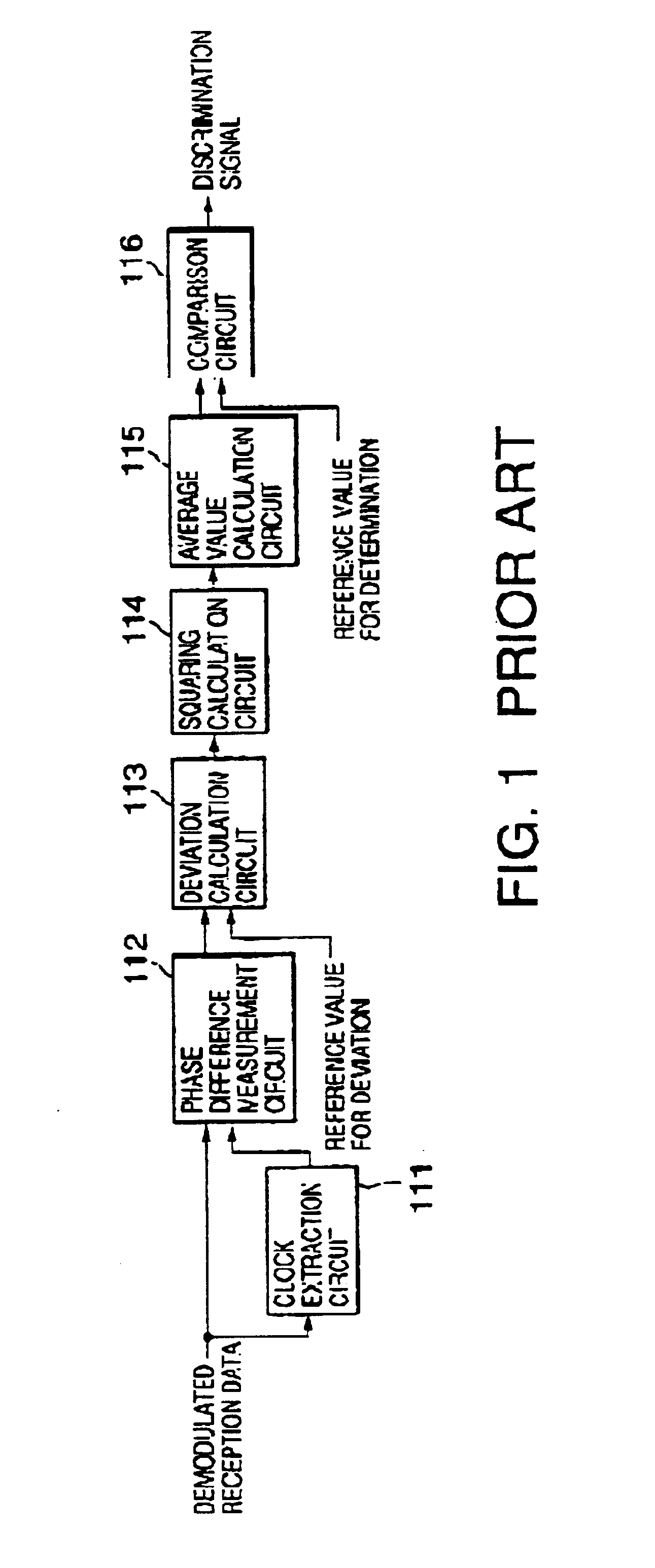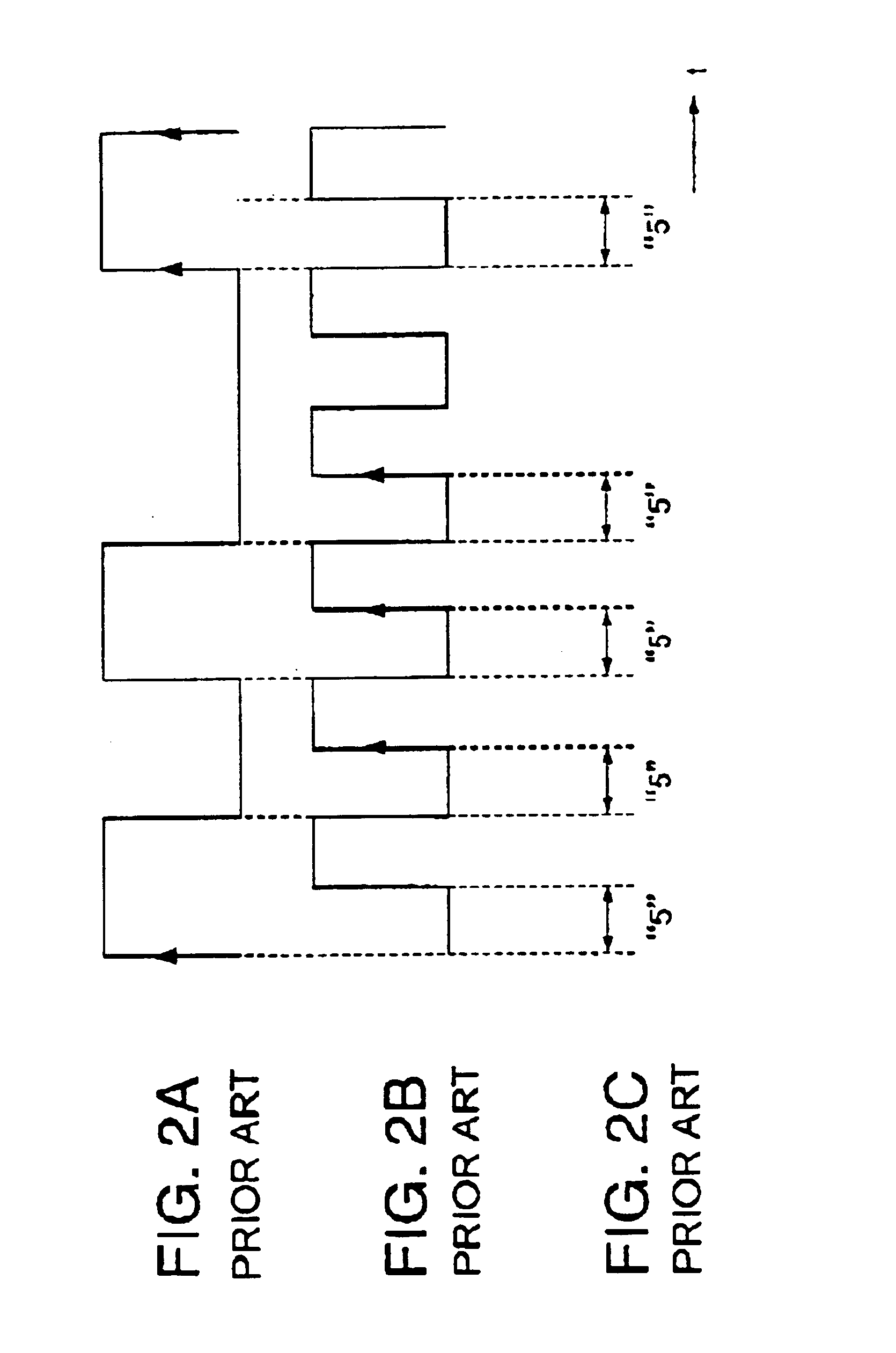Automatic modulation type discrimination apparatus and automatic modulation type discrimination method capable of discriminating plural kinds of modulation types
a type discrimination and automatic technology, applied in the field of automatic modulation type discrimination apparatus and automatic modulation type discrimination method, can solve the problems of unstable value, difficult discrimination processing, and inability to discriminate, and achieve the effect of improving the reliability of the modulation type discrimination apparatus and high accuracy
- Summary
- Abstract
- Description
- Claims
- Application Information
AI Technical Summary
Benefits of technology
Problems solved by technology
Method used
Image
Examples
first embodiment
[0063]An automatic modulation type discrimination apparatus according to the present invention is explained by referring to FIG. 5. The automatic modulation type discrimination apparatus comprises an analog / digital modulation type discrimination circuit 1, an analog modulation type discrimination circuit 2, linear modulation type discrimination circuit 3, and a non-linear modulation type discrimination circuit 4.
[0064]The analog / digital modulation type discrimination circuit 1 is a circuit for, when a reception signal having unknown communication elements is inputted, discriminating whether the reception signal is an analog modulation type or a digital modulation type. The reception signal having been discriminated to be the analog modulation type as a result of the discrimination in the analog / digital modulation type discrimination circuit 1 is inputted to the analog modulation type discrimination circuit 2. The analog modulation type discrimination circuit 2 is a circuit for discr...
second embodiment
[0130]Further, the second embodiment has an effect that, even in case where the reception signal is switched to another signal and the frequency is changed, it can flexibly follow a change in the frequency.
[0131]Next, a third embodiment of the present invention is explained by referring to big 16. In the third embodiment, a storage circuit 7 is added to the constitution of the first embodiment shown in FIG. 5. That is, the storage circuits (first to third storage portions) 7 are respectively connected to the backtracking circuits 26, 38, and 51.
[0132]If a signal discriminated as unknown is inputted, each of the backtracking circuits 25, 38, 51 in this embodiment discriminates that it is a signal of the modulation type other than that made an object, stores the characteristic extraction and the analysis result (including the communication elements), which are obtained from various analyses, and thereby constructs a data base of self-regeneration type. By means of storing, by the back...
PUM
 Login to View More
Login to View More Abstract
Description
Claims
Application Information
 Login to View More
Login to View More - R&D
- Intellectual Property
- Life Sciences
- Materials
- Tech Scout
- Unparalleled Data Quality
- Higher Quality Content
- 60% Fewer Hallucinations
Browse by: Latest US Patents, China's latest patents, Technical Efficacy Thesaurus, Application Domain, Technology Topic, Popular Technical Reports.
© 2025 PatSnap. All rights reserved.Legal|Privacy policy|Modern Slavery Act Transparency Statement|Sitemap|About US| Contact US: help@patsnap.com



